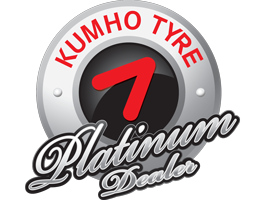Properties and sizes of Kumho Tyres in Kiama
Tyres have an impact on nearly every performance aspect of your car, including braking, acceleration, handling, and comfort, tyres are regarded as the most crucial component.
It gives the surface good traction to prevent slipping and skidding so that it can function both on dry and rainy roads.
- It helps to support the weight of cars.
- It reduces shock when moving, allows for left- or right-hand turns.
- Aids in achieving the greatest acceleration and braking.
Therefore, the stability of tyres is very important for your vehicles. There are many tyres shops in Kiama, but Kumho tyres in Kiama have all the types of tyres and different sizes of tyres are also available there. And we provide the basic services about tyres as well.

Properties of Tyres
Avoiding skidding: For the tyre to prevent skidding, it must have good grip.
Noise resistance: While driving, there should be very little tyre noise.
Optimal Load Carrying Capacity: The tyre size and material should be chosen such that they can support the weight of the vehicle and sustain changes in stress when the wheel turns.
Minimum power consumption: Since the tyre transfers power from the engine to the road, it must lose as little power as possible to operate more effectively.
Uniform wear: To prevent unbalancing, the wear around the tyre should be uniform.
Should be properly balanced: Each tyre is dynamically balanced due to its weight and size.
To offer enough cushioning, the Tyre must have high shock-absorbing capabilities. This will allow it to absorb road vibrations and produce a cushioning effect.
Main Components of Tyres
Following are the main components of tyres explained by Kumho tyres in Kiama:
- Belts:
The plies are held in place by these rubber-coated layers of rayon, steel, fiberglass, and other materials, which are positioned in the center of the tread and cross at angles. It offers puncture resistance and aids in keeping treads in contact with the surface of the road. - Sipes:
These unique tread types throughout the tread increase tractive effort on various road surfaces. - Tread:
It is the area of the tyre that immediately touches the pavement. For a good tyre life, it should have better strength and superior heat dissipation properties. - Grooves:
The areas of the tire's outer layer that have spaces are what make touch with the road. It gives room for water to move and friction to occur. - Shoulder:
The tread's outside edge loops over into the sidewall region. - Sidewall:
The area of the tyre that is exposed to the environment and does not come into touch with the road is this one. It safeguards cord plies. Additionally, it is utilised to display tyre markings and details such tyre size and type. - Inner liner:
It is a tubeless tire's innermost layer. It stops air from moving from the interior to the exterior and vice versa.
Tyre Size Explained
Following are tyre sizes explained by tyre shop, Kumho tyres in Kiama:
195: The tire's width is mm. Generally speaking, you acquire more grip as the numbers rise. but, not always!
57: Profile of a tyre. By this, we mean the pavement's height as a proportion of its breadth. the height will be 97.5 mm. For use in performance cars, lower profiles result in less tyre deformation when subjected to sideways forces like cornering. Low-profile tyres are actually just an upgrade if you want to priorities pleasant handling because it also implies that there is less cushioning between the tyre rim and the road.
R: Denotes a radial tyre. Older cars frequently employed a distinct type of reinforcing material construction known as crossplay before the development of radial tyres.
16: A road wheel's diameter is measured in inches.
87: This is the tyre's load rating. The greater the number, the greater the load capacity of each tyre. In this case, 87 is equal to 615 kg. You may estimate your car's entire weight by multiplying that number by four.
Speed rating, V: And the faster your car can move safely, the higher the letter. The tire's maximum guaranteed speed in this instance is 149 mph. Below is a table of speed ratings.
Types of Tyres
- Categories Tyre:
The tread of typical automobile tyres typically has symmetrical patterns. Some high-performance automobiles do, however, feature tyres with unique tread designs. These directional and asymmetric tyres need to be fitted correctly to the wheel. One of the causes of MOT failure is improper fitting of either or both. - Asymmetric Tyres:
To increase performance, asymmetric tyres have differing tread patterns on the inner and outer borders of the tread. Large firm tread blocks on the outside edge aid in cornering. Smaller tread blocks on the interior edges are intended to transfer water and enhance wet traction.
To aid in straight-line stability, the midsection of the walk frequently has a continuous rib. On the sidewall of the Tyre, the words "inside" and "outside" designate which side the tyre should be installed on. These description gives help to know about Kumho tyres in Kiama. - Directional tyres:
An arrow on the sidewall of directional tyres denotes the direction in which they are intended to rotate. The water that collects at the front of the Tyre is better dispersed by these tyres. Additionally, they improve directional stability and quiet the road.
Disclaimer: This is a generic Information & post; content about the services can be changed from time to time as per your requirements and contract. To get the latest and updated information, contact us today or visit our website.


